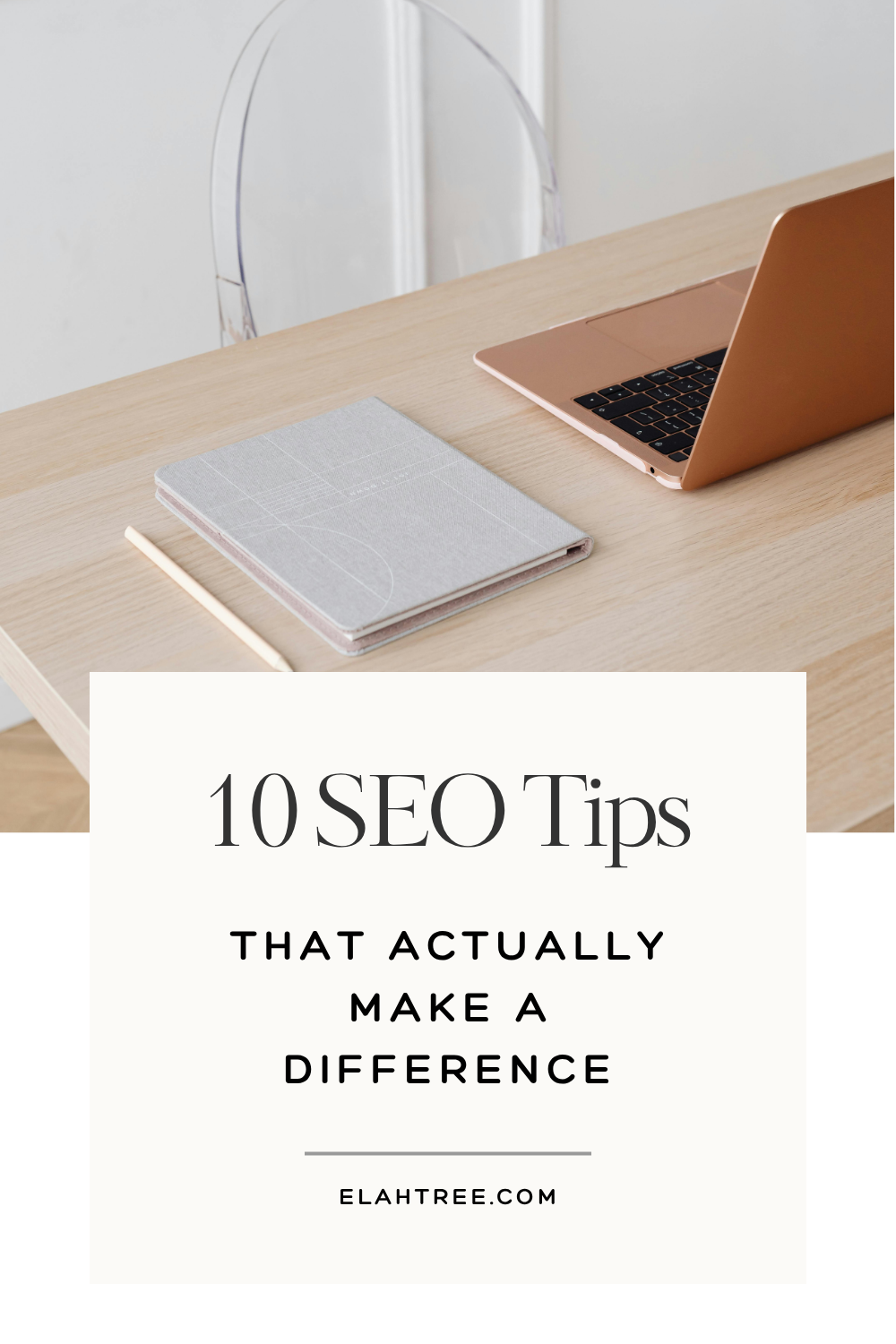10 SEO Tips That Actually Make a Difference (Without Feeling Overwhelming)
If you’ve ever tried to learn SEO and thought, “wow, this feels like a lot”, you’re not alone. Between algorithms, keywords, and all the “rules” that seem to change constantly, it can start to feel like you need a secret decoder ring just to show up on Google.
The good news? You really don’t.
Most of SEO comes down to connecting with your audience, creating helpful content, and making it easy for both people and search engines to navigate your site.
Here are 10 tips that actually make a difference—and that you can start applying one step at a time.
1. Start With Your Audience
I know this sounds simple, but it’s where every great SEO strategy starts. Before worrying about keywords or rankings, always ask: Who am I writing this for, and what are they hoping to find? How can I connect with them?
When you focus on genuinely helping your audience—answering their real questions, in your real voice—Google tends to follow your lead.
2. Use Keywords Naturally
Once you know what people are searching for, gently weave those phrases into your writing. I used to overthink this part, but now I treat keywords like seasoning—just enough to bring out the flavor, never enough to overpower the dish. If it sounds awkward when you read it out loud, it’s probably too much.
3. Make Your Titles Pop
Think of your page title as a small but mighty first impression. It’s what shows up in search results and makes people decide whether to click.
A clear, descriptive title does wonders. Something like “10 Simple SEO Tips for Beginners” will always beat “How to Optimize Everything Ever in 2025.”
4. Meta Descriptions Still Matter
Even though Google sometimes rewrites them, still take the time to write your own. Think of it like the little blurb on the back of a book—it helps the right readers pick your story.
Keep it short, specific, and written like a friendly invitation: “Learn simple SEO tips you can actually use—no jargon, no overwhelm.”
5. Optimize for Mobile
I remember opening my site on my phone once and realizing that my photos were formatted over my text. Lesson learned. Most people are browsing on their phone, so if your site looks clunky or loads slowly, you’re losing visitors before they even start reading. A clean, mobile-friendly layout is one of the best SEO investments you can make.
6. Internal Links Are Your Friend
Whenever I finish writing a post, I look for moments where I can link to something else I’ve written. It’s like saying, “Hey, if you found this helpful, you might also like this.” It keeps readers exploring, and it helps Google understand how all your pages connect.
7. Speed Up Your Site
If there’s one thing that can quietly drag down your SEO, it’s a slow site. No one enjoys waiting for a page to load. Take a minute to compress images, remove anything that’s not essential, and keep my design simple.
A fast site feels good—for visitors and search engines.
8. Use Descriptive Alt Text
Alt text might sound technical, but it’s really just describing what’s in your image.
If you have a photo of a cozy desk setup, you might write: “sunlit workspace with laptop and coffee mug.” This helps people using screen readers, and it gives Google more context about your content. Everyone wins.
9. Keep Your Content Fresh
Revisit older posts every few months. Consider adding new insights, remove outdated info, or even just tweak the headline. Don’t delete old content, instead give it a facelift. This signals to Google that your content is alive and evolving—and honestly, it keeps your site feeling more like a living space than a dusty archive. (I’ve deleted old content, don’t do what I did.)
10. Track Your Results
One of the best parts of SEO is watching small improvements stack up over time.
Use tools like Google Analytics or Search Console to see what’s resonating. Notice which posts people stay on longest or which keywords are bringing in traffic. It’s like getting little notes from your audience saying, this is what’s working—do more of this.
SEO doesn’t have to feel like a game of chasing algorithms. Instead think of it as all the pieces of your story weaved throughout your site. If you focus on being clear, kind, and consistent—writing for people first, and optimizing second—you’ll start to see steady, meaningful growth.
And remember: the goal isn’t just to rank—it’s to connect. When your content genuinely helps someone, that’s good SEO in its truest form.
